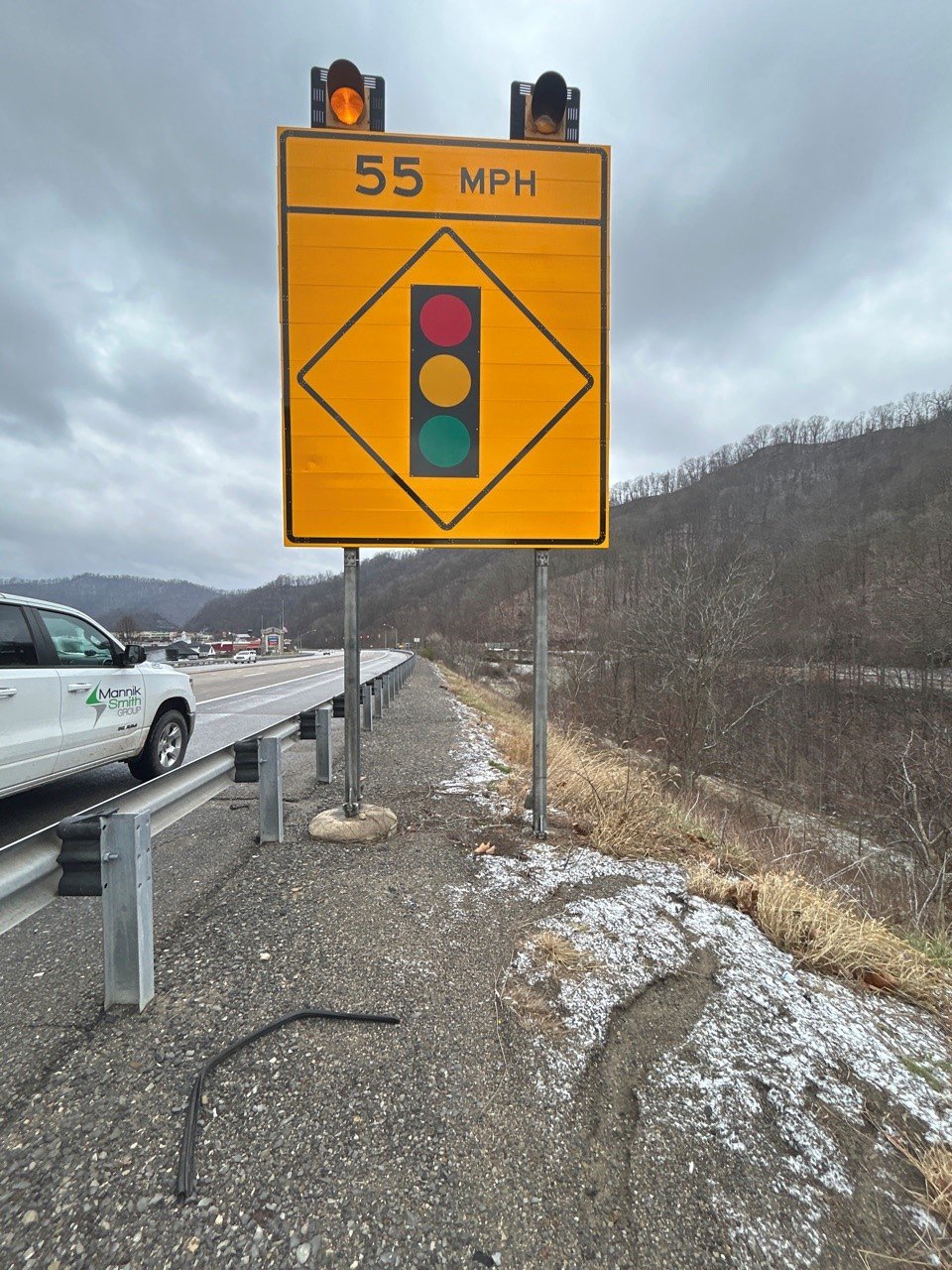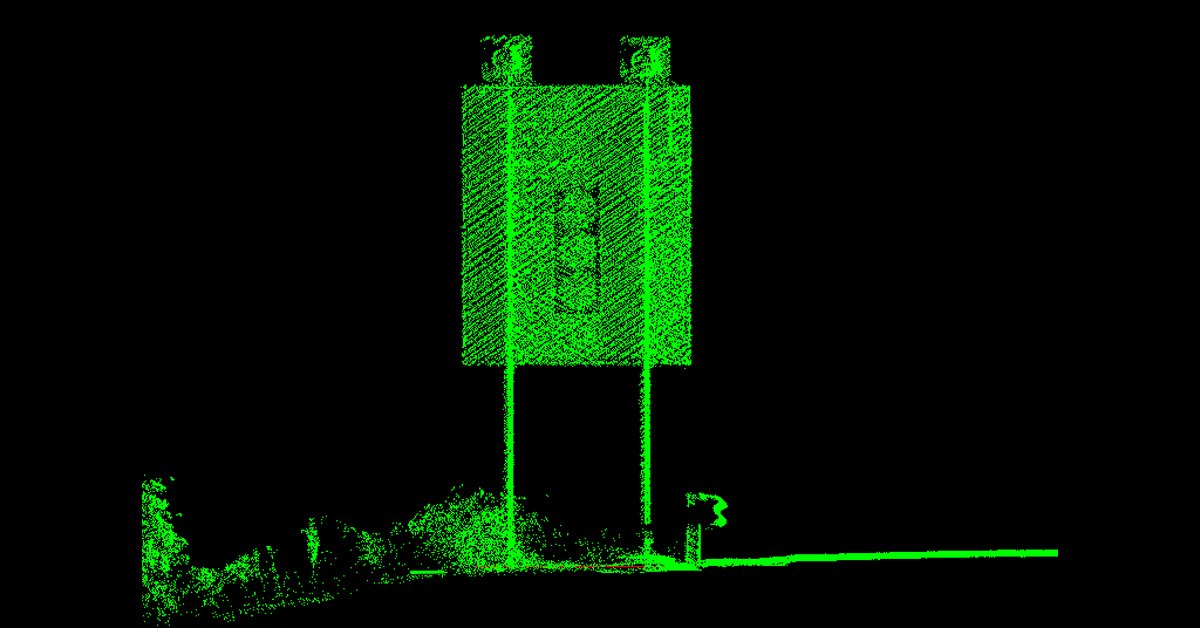The West Virginia Division of Highways (WVDOH) needed a solution to modernize its road sign inventory and identify areas for updates or replacements along a stretch of US 19—a vital part of the Appalachian Development Highway System, a 3,090-mile network of 33 highway corridors connecting the 13 Appalachian states to the Interstate Highway System.
From outdated fonts to incorrect placements, signs that don’t meet regulatory standards can now be identified and addressed, ensuring roadways not only meet safety requirements but also provide clear and consistent information to drivers.
As a subconsultant to our sister firm, the Mannik & Smith Group, we began assisting with this project starting with a stretch of US 19 in Braxton and Nicholas counties to assess road sign conditions and locations by using Geographic Information Systems (GIS) and mobile LiDAR. Our first task involved scanning 1,500 sign assemblies along Corridor L of the Appalachian Development Highway System.

Identifying Signs
The first step in the process was understanding what signage already existed. Our mobile LiDAR vehicle scanned the corridor and captured detailed spatial data. This data was then processed to extract information on each sign assembly — the support structures and the signs they hold.
One assembly can include multiple sign panels. For this project, the most complex assembly held 16 panels. Our team recorded important details, such as the distance from the road, the type and length of supports, and spacing between them. Each assembly was assigned a unique ID and compiled into an automated report that included photos and measurements for the 1,500 assemblies. This inventory information allows engineers to assess the condition of the signs, decide what can remain, and identify what needs replacement.
Enhancing Fieldwork with GIS
While the LiDAR scans provided a wealth of information, some of the finer details on the front and back of the signs required in-person verification. That’s where our GIS expertise came in. We used ArcGIS Field Maps to create a mobile application for Mannik & Smith’s field crews to access sign locations, add precise photos, and collect additional data. This app helped streamline the fieldwork and cut down time spent on-site. Crews could focus on gathering high-quality images and verifying information instead of manually measuring and recording each assembly.

This hybrid approach of LiDAR and GIS optimized efficiency, reducing travel time and minimizing the risk to field staff working on busy roads. Without LiDAR, crews would have needed ladders, tape measures, and GPS units to measure and document each sign manually, and some of the signs were as high as 16 feet. Doing the work manually would have been a time-intensive and costly process. Because data was extracted in the office from LiDAR scans, our crews can drive up to each sign, click on a point on a tablet, and take the pictures they need. We’ve also used ArcGIS to inventory and map out streetlights and culverts for other projects.
Scaling for the Future
The success of this project led to being hired to perform a second task in which we used the same method to scan 250 additional assemblies along US 119 in Logan County.
Modernizing sign inventories isn’t just about compliance. It’s about providing clients with a better understanding of their assets. By mapping signs, culverts, and even streetlights, GIS provides a powerful tool for planning and decision-making. This project is an example of how technology can make infrastructure management more efficient, safer, and cost-effective.
The combination of LiDAR scans and GIS-based fieldwork isn’t just innovative — it’s transformative. There is power in knowing exactly which assets exist in the field and where they are located. As we continue to refine the process, it’s clear this type of work could become a staple of GIS applications in the transportation industry. We hope to expand this approach to other regions and potentially nationwide.
To learn more about DRMP’s GIS services, click here.


















